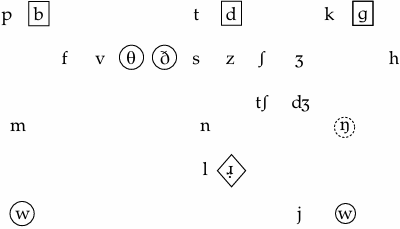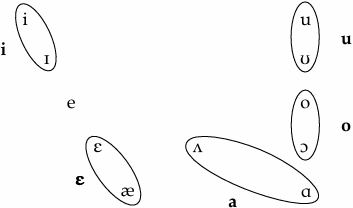

Grammar


Tenses


Present

Present Simple

Present Continuous

Present Perfect

Present Perfect Continuous


Past

Past Simple

Past Continuous

Past Perfect

Past Perfect Continuous


Future

Future Simple

Future Continuous

Future Perfect

Future Perfect Continuous


Parts Of Speech


Nouns

Countable and uncountable nouns

Verbal nouns

Singular and Plural nouns

Proper nouns

Nouns gender

Nouns definition

Concrete nouns

Abstract nouns

Common nouns

Collective nouns

Definition Of Nouns


Verbs

Stative and dynamic verbs

Finite and nonfinite verbs

To be verbs

Transitive and intransitive verbs

Auxiliary verbs

Modal verbs

Regular and irregular verbs

Action verbs


Adverbs

Relative adverbs

Interrogative adverbs

Adverbs of time

Adverbs of place

Adverbs of reason

Adverbs of quantity

Adverbs of manner

Adverbs of frequency

Adverbs of affirmation


Adjectives

Quantitative adjective

Proper adjective

Possessive adjective

Numeral adjective

Interrogative adjective

Distributive adjective

Descriptive adjective

Demonstrative adjective


Pronouns

Subject pronoun

Relative pronoun

Reflexive pronoun

Reciprocal pronoun

Possessive pronoun

Personal pronoun

Interrogative pronoun

Indefinite pronoun

Emphatic pronoun

Distributive pronoun

Demonstrative pronoun


Pre Position


Preposition by function

Time preposition

Reason preposition

Possession preposition

Place preposition

Phrases preposition

Origin preposition

Measure preposition

Direction preposition

Contrast preposition

Agent preposition


Preposition by construction

Simple preposition

Phrase preposition

Double preposition

Compound preposition


Conjunctions

Subordinating conjunction

Correlative conjunction

Coordinating conjunction

Conjunctive adverbs


Interjections

Express calling interjection


Grammar Rules

Passive and Active

Preference

Requests and offers

wishes

Be used to

Some and any

Could have done

Describing people

Giving advices

Possession

Comparative and superlative

Giving Reason

Making Suggestions

Apologizing

Forming questions

Since and for

Directions

Obligation

Adverbials

invitation

Articles

Imaginary condition

Zero conditional

First conditional

Second conditional

Third conditional

Reported speech


Linguistics

Phonetics

Phonology

Linguistics fields

Syntax

Morphology

Semantics

pragmatics

History

Writing

Grammar

Phonetics and Phonology

Semiotics


Reading Comprehension

Elementary

Intermediate

Advanced


Teaching Methods

Teaching Strategies

Assessment
Turkish–English
المؤلف:
Mehmet Yavas̡
المصدر:
Applied English Phonology
الجزء والصفحة:
P190-C8
2025-03-18
447
Turkish–English
The overlay of the native language consonantal system onto the target English inventory results in the following:

From the consonantal inventory, we can easily see potential troubles for the missing English targets /θ, ð, w, ŋ/, which manifest themselves in thin → [tin], they → [de]. Although there is also no /ŋ/ in the consonantal inventory of Turkish, [ŋ] is phonetically present in Turkish before velar stops, as in Ankara [aŋkaɾa], banka “bank” [baŋka]. Also, while [v] is used for the missing target /w/ (e.g. well → [vεl]) this problem is not present intervocalically, as /v/ has a [w] allophone in this position.
Non-continuant obstruents (i.e. stops and affricates) have voicing contrasts in initial and medial positions; in final position, however, we find only the voice less members of these pairs. This is the source of substitutions, for example, in bag → [bεk], bid → [bit]. The progressive ending -ing [ɪŋ] creates a problem, which can be accounted for in two steps. Since [ŋ] in Turkish requires the presence of a following velar stop, and the velar stop in final position cannot be anything other than the voiceless variant, the rendition of -ing [ɪŋ] is [ɪŋk], as in going [goɪŋk].
Significant phonetic differences are relevant to liquids, especially for the non-lateral target retroflex approximant. The Turkish r-sound is an alveolar tap, /ɾ/. In addition, it is produced voiceless (and with friction) in final position (e.g. [kaɾ̥] “snow”). The alveolar lateral has both the ‘clear’ and the ‘dark’ variants, although their distributions are different from those of English and create mismatches. All word-initial laterals and all coda laterals after front vowels are ‘clear’ (cf. English ‘dark’ realizations in lawn and sell).
The conflicts in vowels involve several insufficient separations of contrasting English pairs /i/ – /ɪ/ (e.g. peach– pitch), /ε/ – /æ/ (e.g. mess– mass), /Λ/ – /ɑ/ (e.g. buddy– body), /u/ – /ʊ/ (e.g. fool– full), which are summarized in the following chart:

Other Turkish vowels not relevant for mismatches are /y, ø, ա/.
The syllable structure of Turkish can be described as (C) V (C) (C). There are no initial clusters. The language does allow certain double codas, which can be described as “C1 = sonorant and C2 = obstruent, or C1 = fricative and C2 = stop”. Because of great differences between these clusters and those of English, all target onset clusters, all triple codas, and several double codas expectedly create problems.
Coming from a syllable-timed language, Turkish speakers are expected to have difficulties with English vowel reductions and with rhythm. In addition, the stress patterns of the two languages are significantly different and prove to be sources of difficulty.
The following summarizes the major trouble spots:
• missing target phonemes: /θ/ → [t], /ð/ → [d], /w/ → [v] (except in V_V), /ŋ/→ [n] (except before a velar stop);
• final devoicing of non-continuant obstruents /b, d, g, ʤ/;
• significant phonetic differences: liquids, especially the non-lateral;
• under-differentiation of certain target vowel contrasts;
• onset and coda clusters;
• stress;
• rhythm.
 الاكثر قراءة في Phonology
الاكثر قراءة في Phonology
 اخر الاخبار
اخر الاخبار
اخبار العتبة العباسية المقدسة

الآخبار الصحية















 "المهمة".. إصدار قصصي يوثّق القصص الفائزة في مسابقة فتوى الدفاع المقدسة للقصة القصيرة
"المهمة".. إصدار قصصي يوثّق القصص الفائزة في مسابقة فتوى الدفاع المقدسة للقصة القصيرة (نوافذ).. إصدار أدبي يوثق القصص الفائزة في مسابقة الإمام العسكري (عليه السلام)
(نوافذ).. إصدار أدبي يوثق القصص الفائزة في مسابقة الإمام العسكري (عليه السلام) قسم الشؤون الفكرية يصدر مجموعة قصصية بعنوان (قلوب بلا مأوى)
قسم الشؤون الفكرية يصدر مجموعة قصصية بعنوان (قلوب بلا مأوى)


















